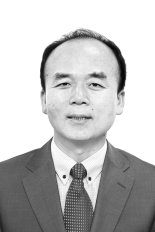Expanding Investment in the United States and the Exchange Rate Equation
- Input
- 2025-11-19 18:18:42
- Updated
- 2025-11-19 18:18:42

The exchange rate situation is concerning. After the Korea Composite Stock Price Index (KOSPI) surpassed the 3,000 mark and quickly soared to 4,000 within four months due to foreign investor buying, the decline in the value of the won is unexpected. Even with dollar inflows for stock purchases, the won continues to weaken. Foreign investors have not been selling off for profit-taking either. Although the exchange rate has dipped slightly from its peak, it remains in the 1,460-won range. During the 1998 foreign exchange crisis, the average exchange rate was about 1,415 won. In 2009, following the global financial crisis, it was around 1,276 won.
It is said that the current account surplus is at a record high, and Korea’s external credit rating remains strong. The global dollar is also weak. Yet, the value of the won is at rock bottom. This has led to diagnoses of a 'new normal.' The reason is surprisingly simple: outbound investment is the prevailing trend. Individuals and companies now prefer investing abroad over domestic opportunities. The rise of Korean retail investors investing overseas is not a new phenomenon. According to the Bank of Korea (BOK), from January to September this year, net overseas securities investment by domestic residents reached $99.8 billion, more than three times the $29.6 billion in foreign investment inflows into Korean securities during the same period.
Corporate investment in the United States is also set to increase. The United States–Korea Tariff Negotiations resulted in an agreement allowing up to $20 billion in annual investment. Although the fact sheet for the United States–Korea Tariff Negotiations includes a clause on 'foreign exchange market stability,' the reality is that dollars will flow out of Korea. This could heighten market anxiety. The weakening Japanese yen is also contributing to the won’s decline. After Sanae Takaichi, Japan’s new prime minister, clearly stated her intention to pursue expansionary fiscal policy, the yen weakened, and the won followed suit.
There are some positive aspects to a high exchange rate. As the rate rises, Korea’s export-driven economy gains price competitiveness. According to the Korea International Trade Association, a 10-won increase in the exchange rate boosts export companies’ operating profits by an average of 0.5 to 1 percent—a trickle-down effect. However, in an industrial structure with high dependence on imported raw materials and growing overseas investment, the side effects are greater. While large exporters like Samsung Electronics and Hyundai Motor have overseas production bases and can handle high exchange rates, small and medium-sized enterprises (SMEs) cannot. About 90 percent of SMEs import intermediate goods, process them, and then sell to large companies or export. When the exchange rate surges, import costs rise, but it is difficult to pass these costs on to large buyers or export prices. The Korea Institute for Industrial Economics & Trade (KIET) analyzes that a 10 percent rise in the exchange rate reduces large companies’ operating profit margin by 0.29 percentage points, while for SMEs, even a 1 percent increase leads to a 0.36 percentage point drop. The domestic market is another weak link. If import prices rise, the nascent recovery in private consumption could be hit hard.
The problem is that while market intervention can temporarily reverse exchange rate trends, it is not a fundamental solution. The weakness of the won against the dollar appears likely to persist. Analysts say the structure of Korea’s economy—shifting toward low growth and low interest rates—is now reflected in the exchange rate. The movement of Korean retail investors investing overseas resembles the behavior of 'Mrs. Watanabe' during Japan’s 'lost three decades.'
The fundamental issue is the weak underpinnings of the Korean economy. In this context, President Lee Jae-myung’s recent emphasis on the need for structural reforms in six areas—regulation, finance, public sector, pensions, education, and labor—is timely. President Lee stated, 'The most urgent task facing Korea is to raise its potential growth rate.' Without improving the economic structure, it will be difficult to escape low growth. Foreigners will only buy Korean stocks, and Korean retail investors will only return, if they see future growth potential in the Korean economy. Moreover, with concerns about industrial hollowing-out due to increased investment in the United States and the risk of a second foreign exchange crisis triggered by exchange rate instability, there is no time to lose. Although previous presidents have declared bold structural reforms, many ended up as empty promises. The expansion of investment in the United States should be used as an opportunity to strengthen Korea’s industrial fundamentals. U.S. direct investment projects should be designed to link with domestic parts, materials, and service companies. Alongside expanding overseas manufacturing lines, it is also reasonable to maintain domestic R&D Centers. The two countries’ industries should become more interdependent, like intertwined vines. The solution to the exchange rate equation linked to investment in the United States is structural reform of the Korean economy.
[email protected] Reporter